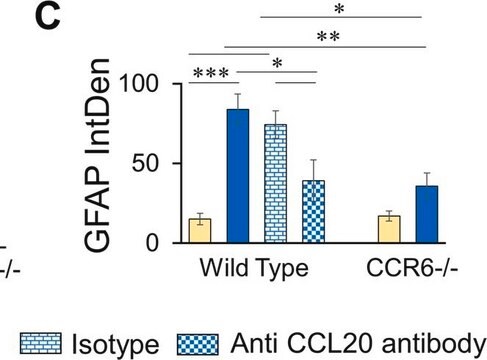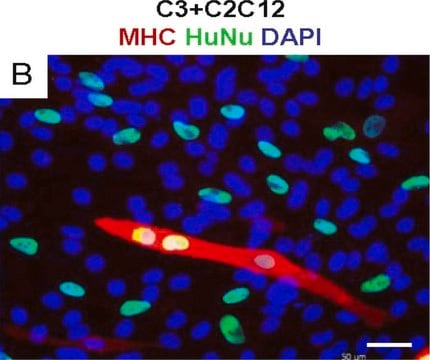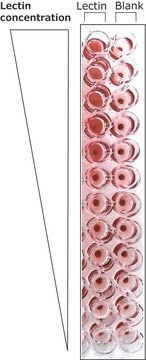MAB360
Anti-Glial Fibrillary Acidic Protein Antibody, clone GA5
ascites fluid, clone GA5, Chemicon®
Synonym(s):
GFAP
About This Item
Recommended Products
biological source
mouse
Quality Level
antibody form
ascites fluid
antibody product type
primary antibodies
clone
GA5, monoclonal
species reactivity
rat, human, mouse, rabbit, chicken, pig, bovine
packaging
antibody small pack of 25 μL
manufacturer/tradename
Chemicon®
technique(s)
immunocytochemistry: suitable
immunohistochemistry (formalin-fixed, paraffin-embedded sections): suitable
western blot: suitable
isotype
IgG1
NCBI accession no.
UniProt accession no.
shipped in
ambient
storage temp.
−20°C
target post-translational modification
unmodified
Gene Information
human ... GFAP(2670)
Related Categories
General description
Specificity
Immunogen
Application
A previous lot was used on cultured mammalian cells.
Immunohistochemistry(paraffin):
1:400-1:800 dilution from a previous lot was used on alcohol-fixed paraffin embedded sections of rat brain (cerebrum or cerebellum) and human brain.
Immunoblotting: A 1:1000 dilution of a previous lot was used.
Optimal working dilutions must be determined by the end user
Quality
Western Blot Analysis:
1:1000 dilution of this lot detected GFAP on 10 μg of Mouse brain lysates.
Target description
Linkage
Physical form
Analysis Note
Positive Control: Cultured astrocytes, brain tissue (white matter), spinal chord, retina
Legal Information
Not finding the right product?
Try our Product Selector Tool.
recommended
Storage Class Code
10 - Combustible liquids
WGK
WGK 1
Flash Point(F)
Not applicable
Flash Point(C)
Not applicable
Certificates of Analysis (COA)
Search for Certificates of Analysis (COA) by entering the products Lot/Batch Number. Lot and Batch Numbers can be found on a product’s label following the words ‘Lot’ or ‘Batch’.
Already Own This Product?
Find documentation for the products that you have recently purchased in the Document Library.
Customers Also Viewed
Protocols
Tips and troubleshooting for FFPE and frozen tissue immunohistochemistry (IHC) protocols using both brightfield analysis of chromogenic detection and fluorescent microscopy.
Tips and troubleshooting for FFPE and frozen tissue immunohistochemistry (IHC) protocols using both brightfield analysis of chromogenic detection and fluorescent microscopy.
Tips and troubleshooting for FFPE and frozen tissue immunohistochemistry (IHC) protocols using both brightfield analysis of chromogenic detection and fluorescent microscopy.
Tips and troubleshooting for FFPE and frozen tissue immunohistochemistry (IHC) protocols using both brightfield analysis of chromogenic detection and fluorescent microscopy.
Our team of scientists has experience in all areas of research including Life Science, Material Science, Chemical Synthesis, Chromatography, Analytical and many others.
Contact Technical Service

















